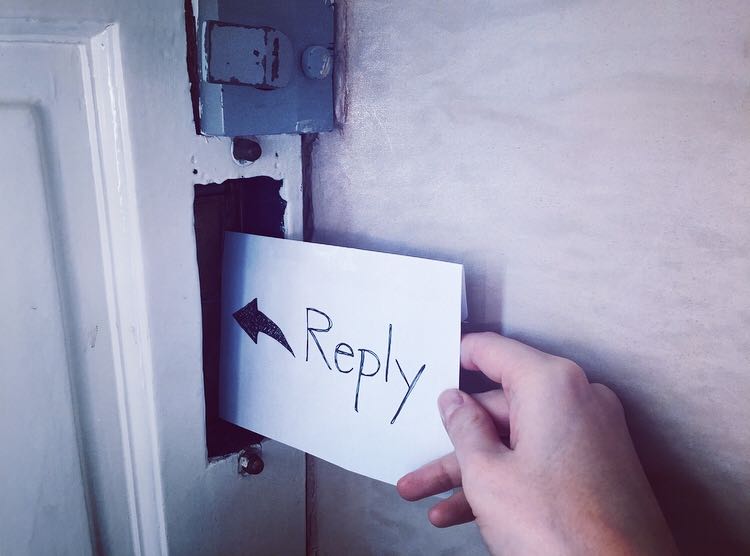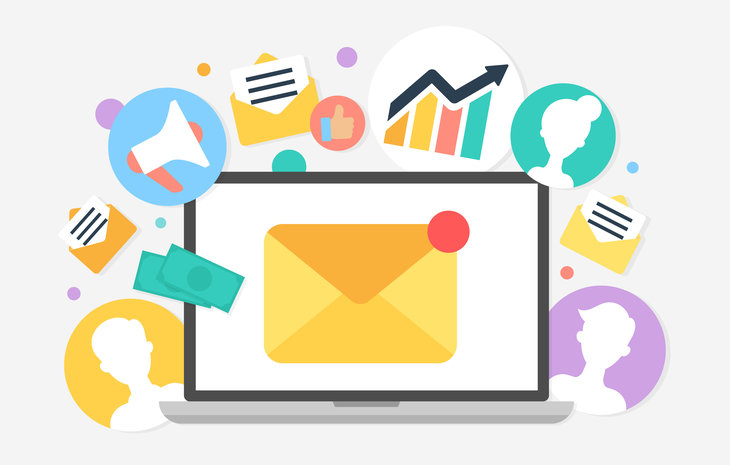
Get weekly
HubSpot updates
The average person has two email accounts -- some of us more. A work one, a personal one, and maybe a more official one for important correspondence (we don’t all need our mortgage broker to see the embarrassing email moniker we chose when we were 12.)
Each day, mail arrives at these addresses and is usually a balance between spam, junk and genuine content you signed up for – you might even receive some that has been created specifically for you and uses your name! Almost 54% of email traffic was categorised as spam in 2018 – that’s a lot of unwanted mail.
But whether you like it or not, email marketing is still relevant (and we won’t be switching to mail sent by owl any time soon.) So you’d might as well be acing it. Here we offer a few tips to getting your emails seen, opened and actioned, helping your subscribers get hold of valuable ‘wow’ content, while also encouraging prospects to become customers with you.
Tip 1: Reach many people, yet speak to one
Even if your email is going out to a huge subscriber list, write the content as if you’re aiming it at just one recipient to really help you target your audience and give a personal, caring touch.
Speaking to one recipient gets easier if you:
- Understand the buyer persona you’re targeting really well.
- Speak directly to one of the real-life customers that you know well in your list as you write: picture this one recipient as you write.
Bonus tips:
- Always use a specific name at the top of the email, and only choose one: if you list multiple recipients, it just means everyone will assume someone else will deal with your request and no-one will reply, getting you nowhere.
- Use the recipient’s name in the subject line of an email – we are programmed to hear and read our own names above other words, so if you want to grab attention in a busy inbox, their name is sure to draw the eye.
Tip 2: (Metaphorically) hit them round the face
Get straight to the point. Don’t waffle on for three paragraphs before getting to the point of the email – hit them with it in the first line. You’ve just got them as far as to open your email, don’t lose them now! The job of a line is to get them to read the next line.
Open your email with something that grabs attention:
- Even if content inspires disagreement or shock, at least someone will want to read on. Try to start with something direct, controversial or surprising – this way you’ll draw them into your email.
- Include eye-catching emojis in the subject line – it may feel odd at first if you're not used to it, but research shows emojis used in this way pack a punch and increase the open rate; who knew?
- Andy Pemberton, writer for The Guardian and experienced email marketer reminds us that:
“There’s a risk associated with ideas, because you have to put yourself on the line. If you feel a bit nervous before you send an email out then you’re probably doing it right."
Bonus tips:
- Open with a question (but only one) – one question is powerful, more than that may make the reader doubt your authority; aren’t you supposed to have the answers, after all?
- Start with a shocking statistic from a reputable source, a surprising prediction about the future of your industry or a valuable quotation from an expert in your field. Whatever those opening words are, they need to inspire strong feelings in your reader or they won’t get past the first line.
Tip 3: Be their equal
Always be the recipient’s equal – don’t talk down to them, but likewise don’t talk up to them. People don’t want to feel belittled, so don’t use overly academic language (unless, of course you work in an academic sphere!), but they also don’t want to feel like you’re sucking up to them – finding the perfect tonal balance is key to achieving trust.
- Write as if you’re talking to a friend. Be bright, cheerful, even funny if you can! Create warmth between you and the recipient; don’t be too formal.
- Be confident, yet honest – if you don’t know something, or struggled with a certain problem yourself when you started out – tell them about it. People love hearing that other businesses have faced and overcome the same challenges as them.
Bonus tips:
- If you’re writing to a specific contact, always include a line about the recipient’s business, a recent blog post they wrote or something similar. This shows you’ve created a personalised email to the recipient, taking the time to seek them out.
- If they see you’ve sought them out specifically to talk about their business, or direct them to content you think they’ll benefit from (‘I saw this article and it reminded me of your business…’), they’re far more likely to take the time to respond or take action.
Tip 4: The Rule of One
If you do something dramatic or different once, it has the desired effect of demanding attention. But if you do it beyond once, it halves its effectiveness with each use.
Use the following devices sparingly:
- Only use one question mark. One question is intriguing, two or more is homework. You want to draw the recipient in, without making them work too hard.
- Only use one exclamation mark – you aren’t a teenager, so don’t over express. Use one exclamation mark (if any) in the entire email and save it for something you’re really excited about or want to draw attention to.
- Only use one number or statistic. In his entire book ‘A Brief History of Time’, Professor Stephen Hawking used only one equation: E = Mc2. He wanted to include far more but his wise editor told him to stick with one number as this was the key focus. If you’ve got a great statistic to share, don’t draw focus away from it by packing in other numbers around it.
Bonus tip:
- Remember: people don’t want to read stuff. From the moment they open your email, they’re looking for reasons to click the little cross in the corner. Include plenty of white space, no long paragraphs, and lots of subheadings.
Tip 5: End strongly
The likelihood is that an email prospect will read the opening of your email, scan the middle, then cut to the end (if you're lucky). This means you need to end strongly, adding something memorable or calling recipients to action just before you sign off. This way, you won’t evaporate in a haze the second they’ve opened their next email.
Tricks to creating memorable email endings include:
- Finish with something like ‘Look forward to hearing from you’. It’s assumptive but not pushy: don’t include ‘soon’ on the end of the sentence though, because this does appear pushy. Also, as we all know, without a specific time in it, ‘soon’ = never.
- If offering actions to take at the end of an email ('you can call me, book a meeting or sign up'), always put the one you actually want the recipient to do last.
Bonus tips:
- Include social media icons into your email sign off. This includes your business' Facebook page, Twitter handle, Instagram account, your personal LinkedIn profile and YouTube channel if your business has one. Make it as easy as possible for the recipient to build a relationship with you and connect online, no matter what their preferred platform.
- End with a link to your calendar so they can put in a time to speak with you straight away – this is a brilliant CTA because it inspires them to think about their next steps with you at the end of the email, moving them along in their buyer's journey with you.
Golden bonus tip: Use video
If you haven’t read our blog post about video being the future of email prospecting yet, then you really should! Video is the future, whether that’s delivering tutorials and webinars, including helpful how-tos on your blog, or inserting personalised video messages into your email campaigns.
Using a short video in email is powerful because:
- It’s a face-to-face, friendly and personal method where recipients can see you’ve really gone to effort to create something for them. Use their name and specific details about their business to further emphasise that you’ve created it just for them.
- You can give some free help away if the email is to a prospect – tell them one or two little things you’ve noticed that could be improved from their website, and how your product or service could rectify this. Don’t be critical, keep it light, not too salesy and ensure the overall tone is helpful and caring.
Super bonus tips:
- Include the fact that you’ve created a video for them in the subject line to grab attention so they know it's waiting for them, even without clicking. Something like ‘Here’s a 60-second video just for you’ will be clear enough.
- Put a short summary of the video in bulletpoints under the video, just in case they don’t choose to watch it – they might prefer to read, so ensure they get the same message in text as they do in multimedia.
Get your emails seen, and don't give up on this method as a form of marketing; just because new forms of communication are being developed all the time, it doesn't mean the old options are redundant. You just have to make small changes to keep evolving with this platform: work harder at your subject lines, personalise content, and include video wherever possible to help recipients sit up and notice your emails above your competitors.

